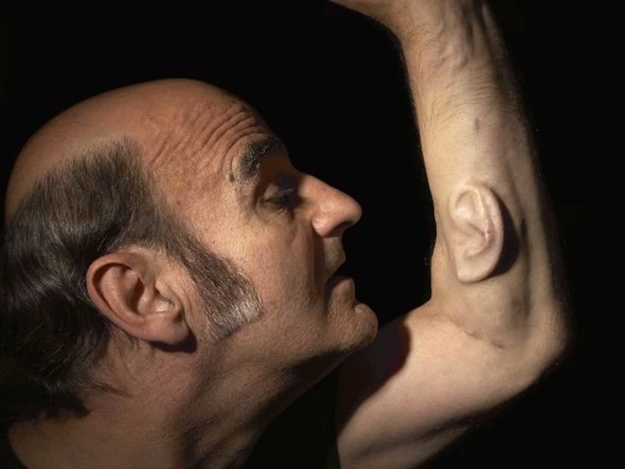Enhancing our bodies with technology is now commonplace. We implant pacemakers to keep our hearts beating and prosthetic limbs can now outstrip human performance. And with our reliance on and constant connection to technology, there are times when the barrier between everyday living and science fiction start to blur, but is that a bad thing?
If the post-human artist Stelarc is to be believed, the age of the cyborg can’t come quickly enough and it may already be here. His project “Ear on Arm” (2018) is a celebration of this and the culmination of twenty years of development. Finally, with the help of private funding and surgeons, he has managed to grow a human ear on his arm that he describes as “an engineered internet organ.” The “ear” can be updated or be replaced to keep up with scientific advances in communication and technology. But to what end?
In Stelarc’s vision of the future, “what’s important is not merely the body's identity, but its connectivity - not its mobility or location, but its interface”. (http://stelarc.org/?catID=20242) Containing a microphone and a wifi chip, anyone will be able to listen to his daily life.
In a post-humanist future, the individual’s identity is less important than the overall collection of data. In the past, it was possibly to categorise someone as non-human based on their race, sex or culture; here we have the origins of slavery and discrimination. Stelarc and many others argue that in the 21st it is the way we communicate and the information that we share that makes us indisputably human. To him, advancing humanity may involve cyborg bodies, but not for an increase in strength but for better connection.
So where does saliva fit into all of this? Spit is our DNA signature, in the same way the Svalbard seed bank preserves the “world’s largest collection of crop diversity” (www.croptrust.org), could the data that our saliva holds be a rapid way to communicate “human-ness” in future? Could this finally be a way to track the rise and fall of civilisations without historical bias or misrepresentation? Our common link and shared history, an elegant solution to data storage, and a complete and organic way of defining exactly who we are?
